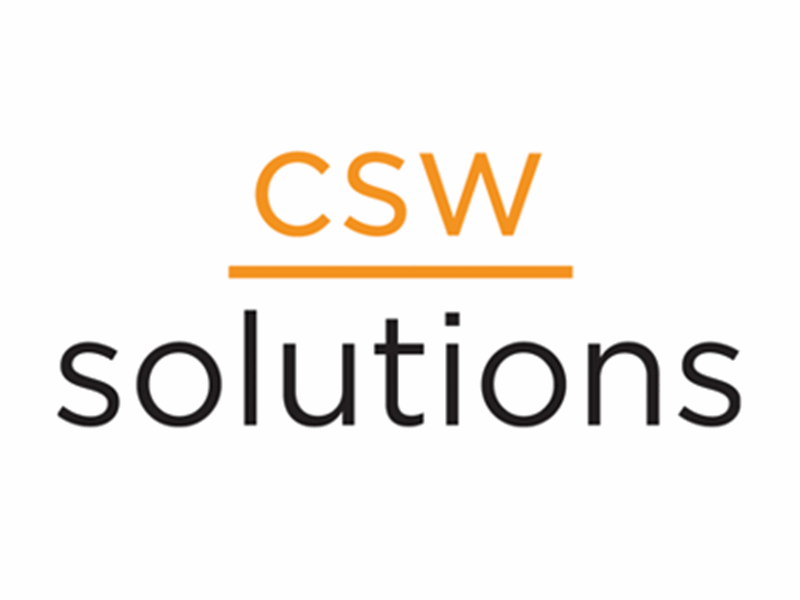CSW Solutions has been named one of the Best Mobile App Developers in Chicago by Expertise.com! Read on to learn more.
Formulating a Realistic Software Development Timeline (Example)
Effective software development requires careful planning and strategizing. One essential aspect of this process is formulating a realistic timeline that ensures the project stays on track and meets the set deadlines. However, creating a software development timeline can be a daunting task, especially for businesses with limited experience in the field. It can be tempting to underestimate the time and resources required for such projects, resulting in missed deadlines and budget overruns. In this blog article, we will provide you with a step-by-step example of how to formulate a realistic software development timeline and explore a realistic software development timeline that takes into account various factors such as project scope, team capabilities, and potential obstacles. By following these guidelines, you can efficiently manage your software projects and ensure their successful completion within the desired time frame. So let's dive in and discover the key elements to consider when formulating a realistic software development timeline for your business.

Realistic Software Development Timeline
Developing software requires careful planning and execution to ensure a successful and timely completion. A realistic software development timeline includes several key aspects that need to be considered.
Here is a breakdown of the different stages involved in a typical software development timeline:
- Planning: This is the initial stage and involves defining the project's scope, objectives, and requirements. It includes gathering information from stakeholders, conducting market research, and creating a project plan. The planning stage sets the foundation for the entire development process. This is where the project scope and goals are defined. It involves identifying the requirements, creating a budget, and setting a timeline for the entire project. This stage also includes identifying the team members and assigning responsibilities.
- Analysis: This stage focuses on analyzing the gathered requirements in detail. It involves identifying potential risks, constraints, and dependencies. The analysis phase helps in determining the feasibility of the project and lays the groundwork for the subsequent stages. In this stage, the team gathers and analyzes all the necessary information to understand the project requirements in detail. This includes conducting interviews with stakeholders, analyzing existing systems, and identifying potential risks or challenges.
- Design: In this stage, the software architecture is designed based on the requirements and analysis. The design phase includes creating system and database designs, user interface designs, and any necessary technical documentation. This stage ensures that the development team has a clear roadmap for implementing the software. Once the requirements are clear, the design phase begins. This involves creating a detailed architecture and design for the software solution, including database design, user interface design, and system design. The design phase also includes creating prototypes or mock-ups to visualize the final product.
- Development: The development phase is where the actual coding and programming take place. It involves transforming the design specifications into functional code. This stage may involve multiple iterations and sprints, depending on the complexity of the project. Regular communication between developers and stakeholders is crucial during this phase to ensure alignment with the original requirements. This is where the actual coding and programming take place. The development stage follows the design specifications and involves writing code, integrating different components, and implementing features and functionalities as per the requirements. Regular code reviews and testing are essential during this stage to ensure quality and accuracy.
- Testing: Once the development phase is complete, testing is carried out to identify and correct any errors or bugs in the software. The software is thoroughly tested to identify any bugs, errors, or usability issues. Testing can include functional testing, performance testing, security testing, unit testing, integration testing, system testing, and user acceptance testing. Rigorous testing helps ensure that the software meets the desired quality standards and functions as intended and testers use various techniques and tools to ensure that the software functions as intended and meets all the requirements. The goal is to ensure that the software solution works as intended and meets all requirements.
- Deployment: After successful testing, the software is ready for deployment. This stage involves preparing for the actual release of the software to end-users or clients. It includes activities such as installation, configuration, data migration, and training. It may also involve integration with existing systems. Proper deployment planning ensures a smooth transition from development to production. This involves preparing the software for production use, including configuring servers, setting up databases, and ensuring compatibility with different platforms or devices. The deployment stage also includes user training and documentation to facilitate a smooth transition.
- Maintenance: After deployment, the software requires ongoing maintenance and support. This includes fixing any bugs or issues that arise, providing technical support to end-users, and making updates or enhancements as needed. Regular maintenance is necessary to ensure the long-term usability and performance of the software. This stage involves monitoring the software, providing regular updates, bug fixes, and enhancements based on user feedback and changing requirements. Regular maintenance helps keep the software running smoothly and ensures its long-term viability.
It is important to note that the duration of each stage can vary depending on the complexity of the project, team size, and other factors. A realistic software development timeline can range from a few months to over a year, depending on the size and complexity of the project. It is also vital to allocate enough time for each phase of the development process and to allow for flexibility in case any unexpected challenges arise and takes into account these criteria with plenty of flexibility to adapt to unforeseen challenges or changes in requirements. Effective project management and communication are key to successfully navigating each stage and delivering a high-quality software product.
Software Development Timeline Example
Title: Building a Real Estate Management System
Project Description:
The project is to develop a real estate management system for a property management company. The system should be able to handle property listings, tenant information, lease agreements, maintenance requests, and financial transactions. The timeline for this project is six months.
Phase 1: Planning and Design (1 month)
- Gather requirements from the client and stakeholders.
- Conduct market research to analyze existing real estate management systems.
- Create a detailed project plan with milestones and deliverables.
- Design the user interface and database structure.
Phase 2: Development (3 months)
- Develop the core functionalities of the system, including property listing management, tenant information management, and lease agreement generation.
- Implement a user-friendly interface for easy navigation and data entry.
- Integrate a secure payment gateway for financial transactions.
- Perform regular testing and debugging to ensure functionality and reliability.
- Collaborate with the client for feedback and make necessary adjustments.
Phase 3: Testing and Quality Assurance (1 month)
- Conduct rigorous testing to identify and fix any bugs or glitches.
- Perform stress testing to ensure the system can handle a high volume of data and users.
- Test the system's compatibility with different devices and browsers.
- Conduct user acceptance testing with a select group of clients to gather feedback.
Phase 4: Deployment and Training (2 weeks)
- Prepare the system for deployment on the client's server or cloud platform.
- Conduct training sessions for the client's staff to ensure they can effectively use the system.
- Address any last-minute issues or concerns raised during training.
Phase 5: Maintenance and Support (Ongoing)
- Provide ongoing maintenance and support for the system, including bug fixes and updates.
- Address any user queries or issues that arise post-deployment.
- Regularly review the system's performance and security measures.
Conclusion:
This software development timeline example demonstrates a phased approach to building a real estate management system. By following this timeline, the project team can ensure efficient development, thorough testing, successful deployment, and ongoing maintenance and support.

Conclusion
Formulating a realistic software development timeline is critical for the success of any project. It requires careful planning, consideration of potential obstacles, and effective communication between all stakeholders. Variables that can affect a schedule include changes in project requirements, unforeseen technical challenges, and resource constraints.
At CSW Solutions, we approach software development timelines with a focus on transparency and adaptability. We understand that flexibility is key in the ever-evolving field of technology and innovation. Our experienced team works closely with clients to define project goals, establish milestones, and allocate resources effectively. We regularly communicate progress with any necessary adjustments to the timeline and involve stakeholders in decision-making processes, ensuring that there are no surprises along the way.
We believe in the prioritization of thorough analysis and smart planning during the initial stages of a project to identify potential risks and challenges that may impact the schedule. We also factor in potential scope changes, third-party integrations, and testing requirements when formulating timelines. By considering these factors and implementing agile methodologies, we can adapt to changes efficiently and maintain a realistic schedule. With this proactive approach, we are able to address issues promptly and ensure that the project stays on track.
Our commitment to delivering high-quality software within agreed upon timelines has earned us a reputation for reliability and customer satisfaction. We understand the importance of meeting deadlines, and we strive to exceed expectations while maintaining the highest standards of quality.
Overall, formulating a realistic software development timeline requires careful consideration of variables that can affect the schedule. At CSW Solutions, we approach each project with transparency, adaptability, and a focus on the unique goals of the organization and its industry. Trust us to deliver exceptional software solutions within your desired time frame and with your distinctive footprint.
